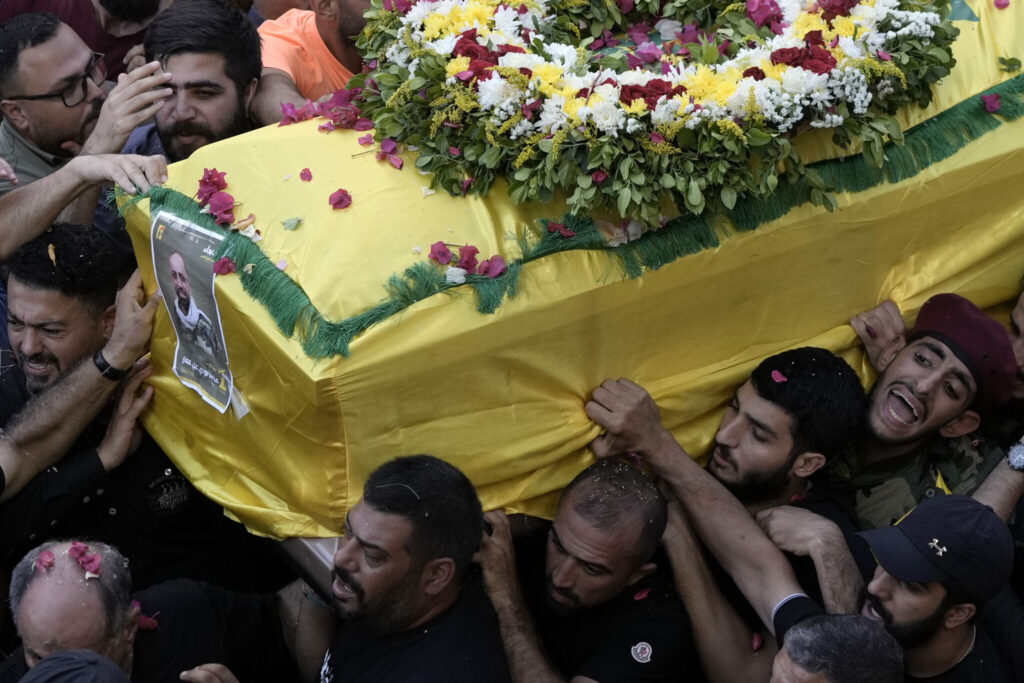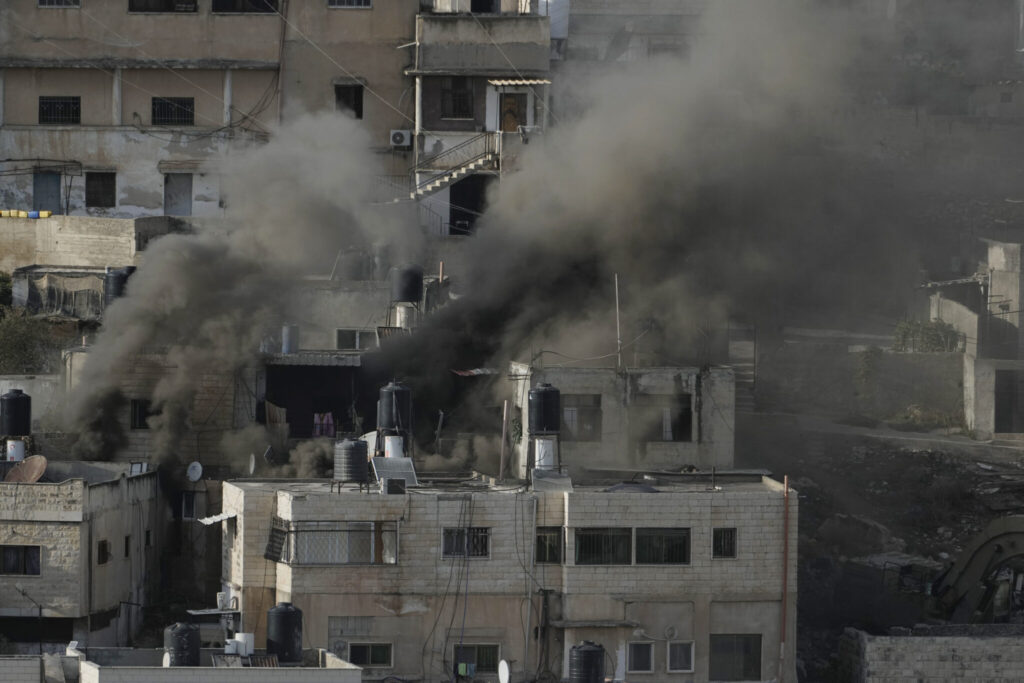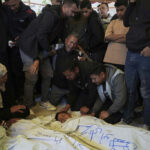Gaza airstrikes/ Hezbollah rocket attack/ Israel-Gaza conflict escalation/ Hezbollah retaliation/ Middle East tensions/ Newslooks/ J. Mansour/ Morning Edition/ Israeli airstrikes in Gaza overnight killed 15 people, including children, as tensions escalate. Hezbollah launched 140 rockets into northern Israel in retaliation for previous Israeli attacks. Meanwhile, a leader of an Iraqi militia was killed in a separate strike in Syria, heightening regional instability.

Gaza Attacks and Regional Tensions Quick Looks
- Israeli airstrikes in Gaza overnight killed 15 people, including six from a single family.
- Hezbollah fired 140 rockets into northern Israel on Friday, retaliating for Israeli strikes on southern Lebanon.
- A leader of Iraq’s Kataeb Hezbollah militia was killed in a drone strike near Damascus, Syria.
- Israel’s military says it killed two Hezbollah fighters planting explosives along the Lebanon border.
- Gaza’s Health Ministry reports over 41,000 Palestinians killed since the conflict began, with Israel claiming 17,000 were militants.
- The conflict between Israel, Hezbollah, and Hamas has seen near-daily escalations, with fears of a broader regional war growing.
Israeli Strikes Kill 15 in Gaza Overnight Attacks
Deep Look:
Israeli airstrikes on Gaza overnight left 15 people dead, marking another deadly escalation in the ongoing Israel-Hamas conflict. Palestinian authorities reported multiple attacks in Gaza City, with some strikes targeting residential areas. The violence comes just hours after Hezbollah launched 140 rockets into northern Israel, further intensifying tensions along the Lebanon-Israel border.
Among the casualties in Gaza, six people from a single family were killed in an early morning airstrike that hit their home. Gaza’s Civil Defense confirmed that children were among the dead. In a separate strike in Gaza City, another person was killed when an airstrike hit a group of people on the street. More deaths were reported in Beit Hanoun and Beit Lahya, where Israeli strikes destroyed vehicles and homes.
Israeli officials maintain that their military targets only militants and accuse Hamas of using civilian areas for operations. Israel has yet to comment on the specific overnight strikes, but the Gaza Health Ministry has raised the death toll in the territory to more than 41,000 since the conflict’s escalation on October 7. The ministry claims that over half of those killed are women and children, while Israel asserts that 17,000 of the casualties were militants, though it has provided no concrete evidence to support this figure.
The rocket barrage from Hezbollah, which followed a speech by the group’s leader Hassan Nasrallah, marked one of the most intense attacks from the Lebanese group in recent months. The Israeli military said the rockets came in three waves, hitting air defense bases and targeting an Israeli armored brigade. The attack was framed as retaliation for Israeli strikes on southern Lebanese villages earlier this week, which Hezbollah claimed had caused extensive damage.
Nasrallah had vowed to continue striking Israel following what he described as a “severe blow” from Israeli sabotage of Hezbollah communication devices in Lebanon and Syria. Those attacks, which targeted pagers and walkie-talkies used by Hezbollah members, resulted in 37 deaths and around 3,000 injuries. The device explosions, widely attributed to Israel, have further fueled fears that the near-daily exchanges of fire between Hezbollah and Israel could spiral into a full-scale war.
Amid the rising tensions, a significant development occurred in Syria, where a senior leader of the Iraqi Kataeb Hezbollah militia was killed in a drone strike. According to Iraq’s Kataeb Hezbollah, the leader, Abu Haidar al-Khafaji, was acting as a security advisor in Damascus when his vehicle was targeted. The UK-based Syrian Observatory for Human Rights reported that the strike, which took place near Damascus International Airport, also injured another person traveling in the car.
While Israel frequently carries out strikes against Iranian-backed militias and Hezbollah in Syria, it rarely comments on these operations. The death of the militia leader in Syria underscores the broader regional dimension of the conflict, where Iran-backed forces have been active in supporting both Hezbollah and Hamas.
Meanwhile, Israel’s military announced that two Hezbollah fighters were killed while attempting to plant explosives along the Lebanon border earlier this week. Israeli forces released footage showing the militants under fire as they tried to plant an improvised explosive device near an Israeli military post. Following the border clash, the massive explosions of communication devices in Lebanon further strained the already tense situation.
As violence continues to escalate across the region, the humanitarian crisis in Gaza worsens. The war has displaced around 90% of Gaza’s 2.3 million residents, with homes and infrastructure destroyed by Israeli airstrikes. The international community has expressed growing concern over the conflict’s widening scope and the potential for it to draw in more actors, including Iran, Syria, and other regional powers.
While the exchanges between Israel, Hamas, and Hezbollah show no signs of abating, diplomatic efforts to broker peace remain minimal, and both sides appear entrenched in their respective positions. With Gaza suffering immense civilian losses and Israel bracing for further retaliation from Hezbollah, the prospect of a broader regional conflict looms larger each day.







